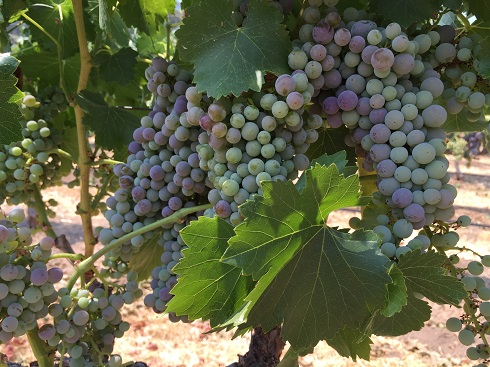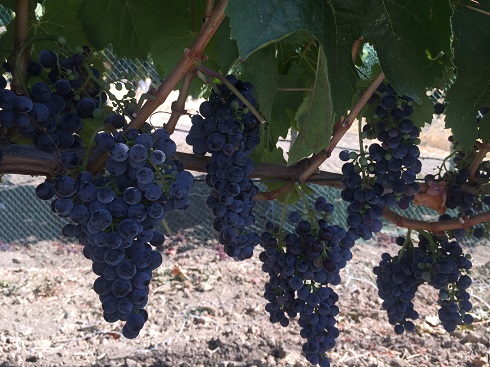Veraison
If you don't already know, we're obsessive-compulsive about farming. We also can be nerdy, and we definitely love the process of creating wine. With this disclaimer, we'd like to explain how we're OCD in the vineyards during veraison.
Imagine the red in the first bell curve shows the amount of grapes you'd harvest if you do not go through the vineyard during veraison.
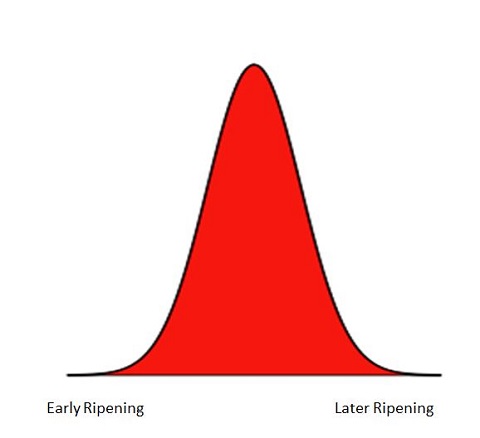
If you do no passes during veraison, then at harvest you pick grapes over-ripe, just right, and under-ripe (green flavors though purple in color). Clusters of grapes do not ripen at the same time - look at a single syrah plant...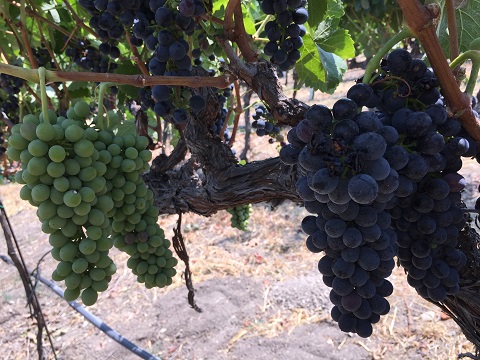

The first pass we make through the rows is when the grapes are at 30% veraison and we drop several of the darkest-most clusters. Then, we wait, and at 80% veraison we make a second pass and drop the remaining green clusters.
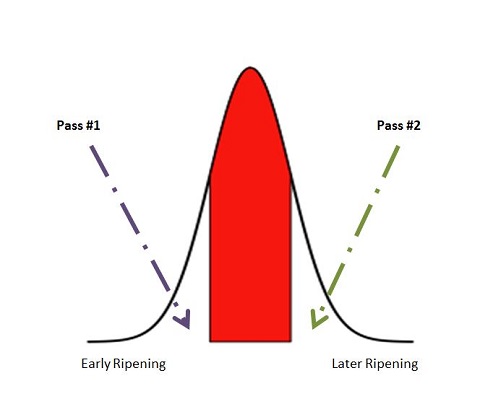
This is what the ground looks like after the first and second passes...
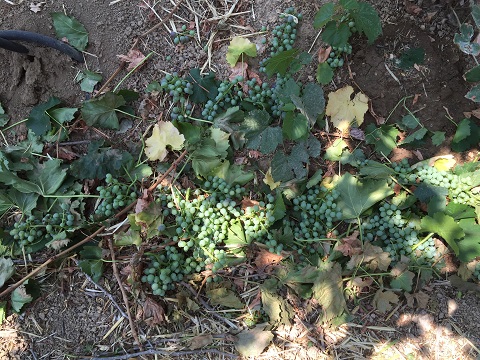
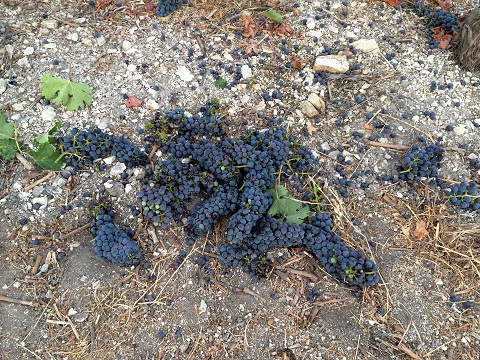
Finally, there's pass three at 100% veraison. At this moment, the vine thinks its on the home stretch to complete ripening and its canopy (nature's solar panel) is working to support the remaining full load of grapes. On pass 3, we drop perfect fruit to take the load down to just one cluster per shoot and end up with the small remaining area in red.
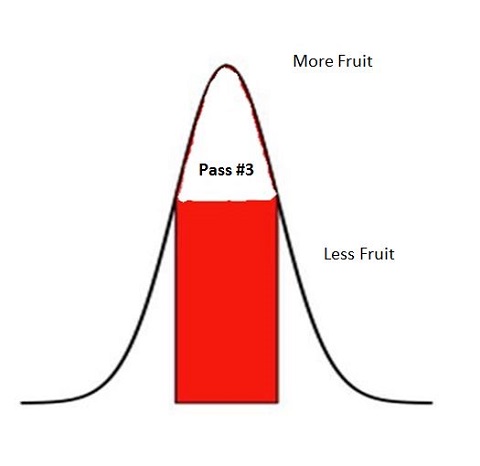
The result can be barely 1 ton per acre at harvest. But, what a special ton of grapes - consistently ripe, ideal sugar and acidity, and with soft, well-integrated tannins that form because of the third pass. Each vintage, the start of harvest varies from early to late-September and last 6 weeks.
If you're not part of The Farm Club and you've made it this far through this description, why not join The Farm Club while you have the opportunity to be a part of the next release? Details here.
About Veraison
During veraison, Cabernet Sauvignon, Grenache, Syrah, Malbec, Petit Verdot and other red grapes change color from green to dark purple. But there's more than meets the eye! At the cellular level, the individual grape berries stop growing in size. Acidity changes. And most importantly, the vine re-channels its energy from growth to accumulating sugar and the other tasty components that make a great wine.
During veraison, Cabernet Sauvignon, Grenache, Syrah, Malbec, Petit Verdot and other red grapes change color from green to dark purple. But there's more than meets the eye! At the cellular level, the individual grape berries stop growing in size. Acidity changes. And most importantly, the vine re-channels its energy from growth to accumulating sugar and the other tasty components that make a great wine.
In a matter of weeks, a berry can go from 0% to 28+% sugar content. Evolutionary, this happens to attract critters to eat ripe grapes (and dispose of the seeds). For oenophiles, it's the sugar that ferments to make fermentation possible during harvest.
Here are 2 vines - at beginning and end of veraison:
